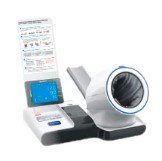Proficiency Testing in Immunohistochemistry: Importance and Best Practices
Summary
- Proficiency Testing in immunohistochemistry (IHC) is crucial for ensuring accuracy and reliability of Test Results in a medical laboratory setting.
- The frequency of Proficiency Testing in IHC should adhere to guidelines set by regulatory bodies to maintain Quality Standards.
- Regular participation in Proficiency Testing helps identify areas for improvement and ensures quality patient care.
Introduction
Proficiency Testing in immunohistochemistry (IHC) is a critical component of quality assurance in the medical laboratory setting. It involves the evaluation of a laboratory's testing process by an external agency to ensure the accuracy and reliability of results. In the United States, Proficiency Testing is mandated by regulatory bodies such as the Clinical Laboratory Improvement Amendments (CLIA) to maintain Quality Standards and ensure patient safety.
The Importance of Proficiency Testing in IHC
Proficiency Testing in IHC plays a crucial role in ensuring the accuracy and reliability of Test Results. It allows laboratories to assess their performance against established standards and identify areas for improvement. Regular participation in Proficiency Testing helps laboratories stay current with best practices and quality assurance measures.
Benefits of Proficiency Testing in IHC
- Ensures accuracy and reliability of Test Results
- Identifies areas for improvement in testing processes
- Helps laboratories stay current with industry standards
- Enhances patient safety and quality of care
Guidelines for Proficiency Testing Frequency
Regulatory bodies such as CLIA provide guidelines on the frequency of Proficiency Testing in IHC. These guidelines are designed to ensure that laboratories maintain Quality Standards and adhere to best practices. It is important for laboratories to follow these guidelines to ensure the accuracy and reliability of Test Results.
Factors to Consider
- Type of tests performed
- Volume of tests conducted
- Complexity of testing processes
- Regulatory requirements
Best Practices for Proficiency Testing in IHC
In addition to following regulatory guidelines, laboratories should implement best practices to ensure the effectiveness of Proficiency Testing in IHC. These practices include:
Regular Participation
Laboratories should participate in Proficiency Testing on a regular basis to monitor their performance and identify areas for improvement.
Continuous Training
Staff should receive ongoing training and education to stay current with best practices and quality assurance measures in IHC.
Data Analysis
Laboratories should analyze Proficiency Testing data to identify trends and make necessary adjustments to testing processes.
Challenges in Proficiency Testing
Despite its importance, Proficiency Testing in IHC can present challenges for laboratories. Some common challenges include:
Cost
Participation in Proficiency Testing can be costly, especially for smaller laboratories with limited resources.
Time Constraints
Managing Proficiency Testing alongside daily laboratory operations can be challenging, requiring careful planning and coordination.
Interpretation of Results
Interpreting Proficiency Testing results and implementing corrective actions can be complex, requiring expertise and attention to detail.
Conclusion
Proficiency Testing in immunohistochemistry is essential for ensuring the accuracy and reliability of Test Results in the medical laboratory setting. Laboratories should adhere to regulatory guidelines and implement best practices to maintain Quality Standards and enhance patient safety. Regular participation in Proficiency Testing helps identify areas for improvement and ensures quality patient care.

Disclaimer: The content provided on this blog is for informational purposes only, reflecting the personal opinions and insights of the author(s) on the topics. The information provided should not be used for diagnosing or treating a health problem or disease, and those seeking personal medical advice should consult with a licensed physician. Always seek the advice of your doctor or other qualified health provider regarding a medical condition. Never disregard professional medical advice or delay in seeking it because of something you have read on this website. If you think you may have a medical emergency, call 911 or go to the nearest emergency room immediately. No physician-patient relationship is created by this web site or its use. No contributors to this web site make any representations, express or implied, with respect to the information provided herein or to its use. While we strive to share accurate and up-to-date information, we cannot guarantee the completeness, reliability, or accuracy of the content. The blog may also include links to external websites and resources for the convenience of our readers. Please note that linking to other sites does not imply endorsement of their content, practices, or services by us. Readers should use their discretion and judgment while exploring any external links and resources mentioned on this blog.
